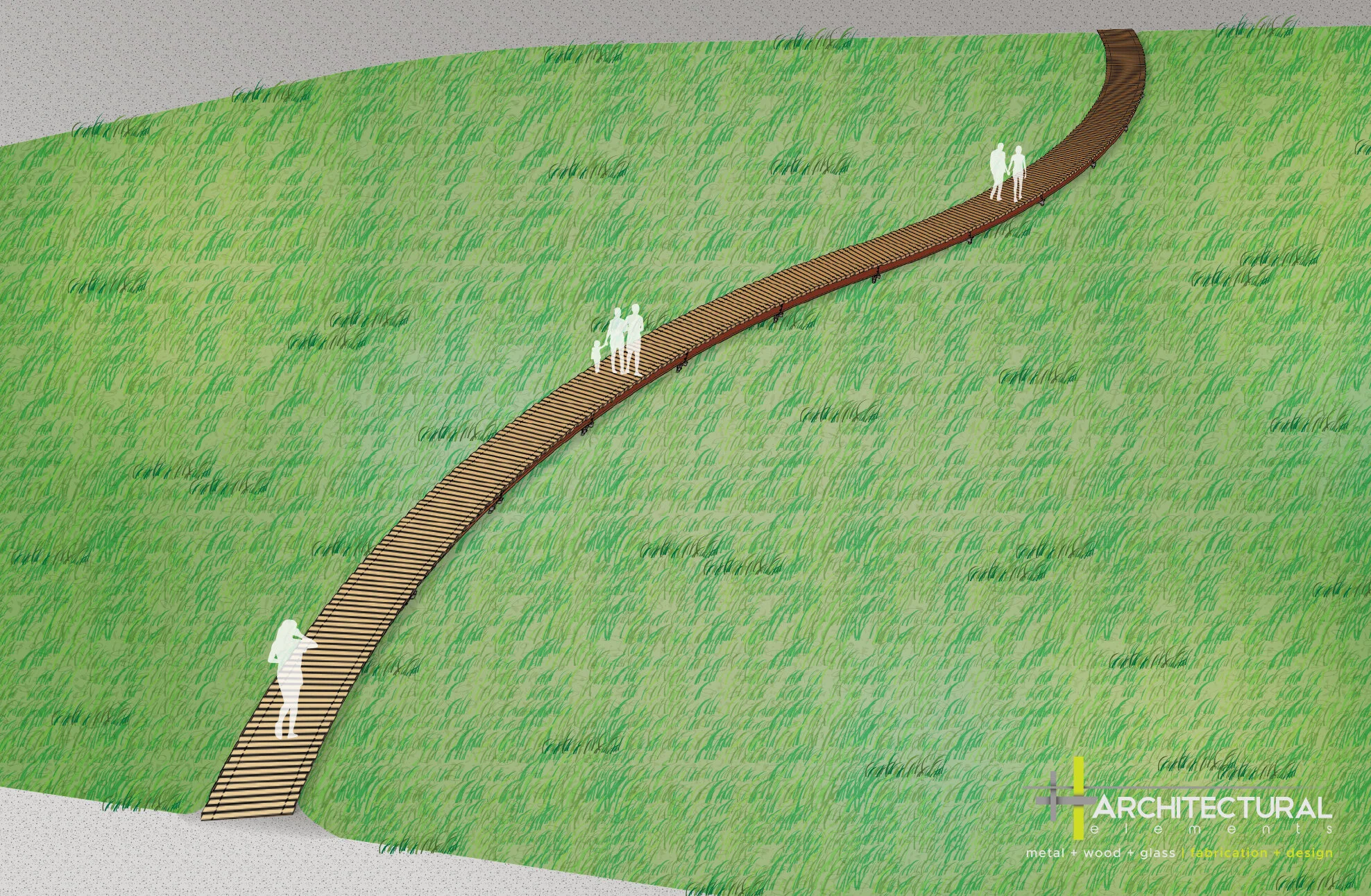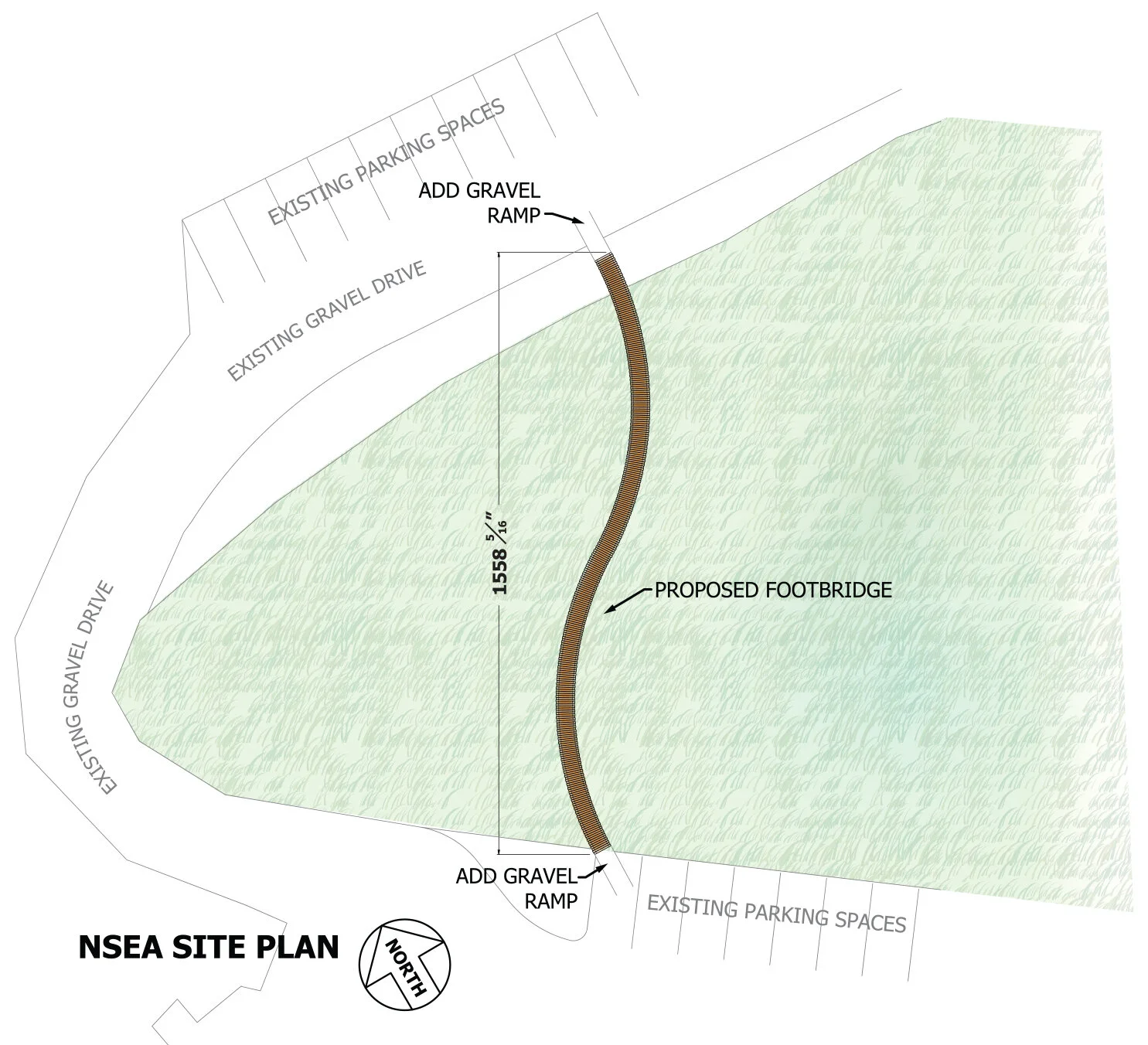A Pathway to Preservation
Bridging the gap between access & preservation
Restoring the Class-C wetland on the NSEA property was a priority. The goal was to strategically & delicately develop this plot into a public demonstration site that can be easily accessed by landowners, students, and community members. Our ambition was to create an interpretive & educational path leading to an area flourishing with native wetland shrubs & trees where visitors will learn and be inspired by the restored habitat— discovering the sights, scents, and sounds of our wild, native flora & fauna.
Fueled by their adoration for nature, Joe Clark’s team at Architectural Elements (AE) joined NSEA in their mission to protect sensitive salmon habitat. Joe & AE have created an eco-friendly access bridge that will be the foundation for the interpretive pathway that will weave through the NSEA restored habitat. This one-of-a-kind, industrial path is innovative, environmentally sensitive, durable, and aesthetically blends with the surrounding landscape. The Pathway to Preservation Project unites Joe’s two greatest talents & passions: the environment and metal fabrication.
“The Pathway to Preservation Project is important because it demonstrates how restored wetland improves wildlife habitat and hydrology while mitigating the projected impacts of climate change for salmon and other wildlife. This wetland is hydraulically connected to Squalicum Creek. The healthier this and other wetlands are, the healthier the interconnected watershed that surrounds it is.”
Rachel Vasak, NSEA Executive Director
The Restoration: Details
The Pathway to Preservation Project’s objective was to restore a 2-acre plot of Class-C wetland on our property. This site was just a mowed field. A key centerpiece to this pathway is an elevated footbridge. This bridge allows pedestrians to cross the site and give us the ability to host instructional gatherings without disturbing the delicate wetland below. This one-of-a-kind, industrial path is durable, environmentally sensitive, innovative, and aesthetically blends with the surrounding landscape.
The Access Bridge: Technical Details
The Access Bridge is 48-inches wide and approximately 130-feet long. It will wind through the landscape in almost an “S” shape.
The Bridge is supported by GoliathTech helical pilings with adjustable heads. Installation of these pilings will be completed by GoliathTech’s Skagit Valley team. The actual number of pilings will vary based on site conditions and the recommendations of the talented engineers of Kingworks.
The Bridge has cedar decking; the timbers will stagger horizontally along the bridge. The decking will mount to custom-fabricated I-beams at the edges and a T-bar along the center. The stringers and T-bar will be fastened to cross-bars supported by the helical pilings below.















